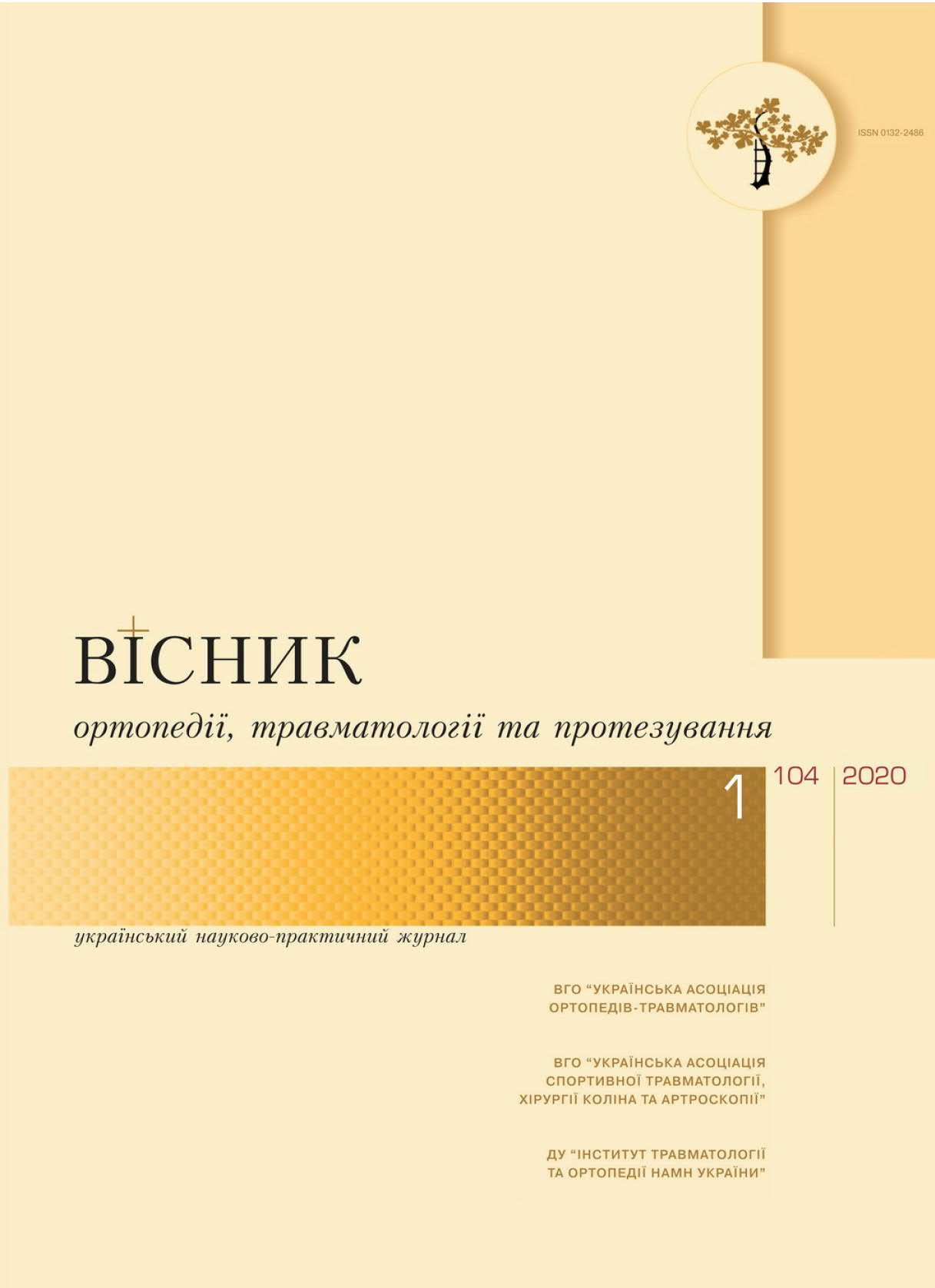Abstract
Summary. Posttraumatic (secondary) arthrosis of the shoulder joint, which develops as a result of fractures of the proximal epimetaphysis of the humerus, accounts for about 10% of all arthrosis cases of the shoulder joint, regardless of therapeutic tactics.
Objective: to investigate the main causes of the development of post-traumatic arthrosis of the shoulder joint in patients with fractures of the proximal epimetaphysis of the humerus.
Materials and Methods. The clinical group consisted of 295 patients with fractures of the proximal epitaphysis of the humerus, who from 2009 to 2020 were treated at the departments of the SI “Institute of Traumatology and Orthopedics of NAMS of Ukraine” (Kyiv). Of these, 55 (18.64%) were patients who had post-traumatic arthrosis of the shoulder joint. The age of the patients ranged from 27 to 68 years (mean age 42.7±9.5 years); men were 155 (52.5%), women 140 (47.5%). The presence of post-traumatic omarthrosis was determined in terms of 3 to 5 years after the fracture. All patients with post-traumatic osteoarthrosis of the shoulder joint, depending on the treatment, were divided into two groups: group A – patients after metal osteosynthesis of the proximal epimetaphysis of the humerus, group B – patients who underwent conservative treatment. Group A included 35 (63.6%) patients, group B – 20 (36.4%) patients. A general AS/ASIF classification was used to determine the type of a fracture.
Conclusions. The highest number of cases of post-traumatic omarthrosis after conservative treatment was found in patients with type A1 fractures – 10.9% and A2 – 14.6%; after surgical treatment, post-traumatic omarthrosis was developed in patients with type C3 fractures – 12.6% and A3 – 14.6% (p≥0.05). The main reason for the development of post-traumatic omarthrosis is aseptic necrosis of the shoulder head – 61.8% (p≤0.05), which is more common in patients with type B and C fractures according to AO. The greatest impact on the development of omarthrosis in patients with fractures of the proximal epimetaphysis of the humerus is the load on the shoulder joint, both during rehabilitation and in daily life, and the presence of contracture in the shoulder joint.
References
Functional outcomes of reverse shoulder arthroplasty compared with hemiarthroplasty for acute proximal humeral fractures / M.J. Boyle, S.M. Youn, C.M. Frampton [et al.] //J. Shoulder Elbow Surg. – 2013. – № 22. – Р. 32–37.
Crosby L.A. Proximal Humerus Fractures Evaluation and Management / L.A. Crosby, R.J. Neviaser. – Springer, International Publishing Switzerland, 2015. – 164 р.
Habermeyer P. Classifications and Scores of the Sholder / P. Habermeyer, P. Magosch, S. Lichtenberg. – Springer, Berlin, 2006. – 297 р.
Karl J.W. The Epidemiology of Upper Extremity Fractures in the United States, 2009 / J.W. Karl, P.R. Olson, M.P. Rosenwasser ∕∕ J. Orthop. Trauma. – 2015. – № 16. – Р. 25–28.
Perren S.M. Fracture healing: fracture healing understood as the result of a fascinating cascade of physical and biological interactions. Part I. An Attempt to Integrate Observations from 30 Years AO Research. / S.M. Perren // Acta Chir. Orthop. Traumatol. Cech. – 2014. – № 81. – Р. 355–364.
Minimally displaced fractures of the greater tuberosity: outcome of non-operative treatment / E. Rath, N. Alkrinawi, O. Levy [et al.] // J. Shoulder Elbow Surg. – 2013. – № 22. – Р. 8–11.
The PHILOS plate for proximal humeral fractures-risk factors for complications at one year / C. Spross, A. Platz, К. Rufibach [et al.] // J. Trauma Acute Care Surg. – 2012. – № 72. – Р. 783–792.
Лапач С.Н. Статистические методы в медико-биологических исследованиях с использованием Excel / C.Н. Лапач, А.В. Губенко, П.Н. Бабич. – Киев : Морион, 2000. – 320 с.

This work is licensed under a Creative Commons Attribution 4.0 International License.
